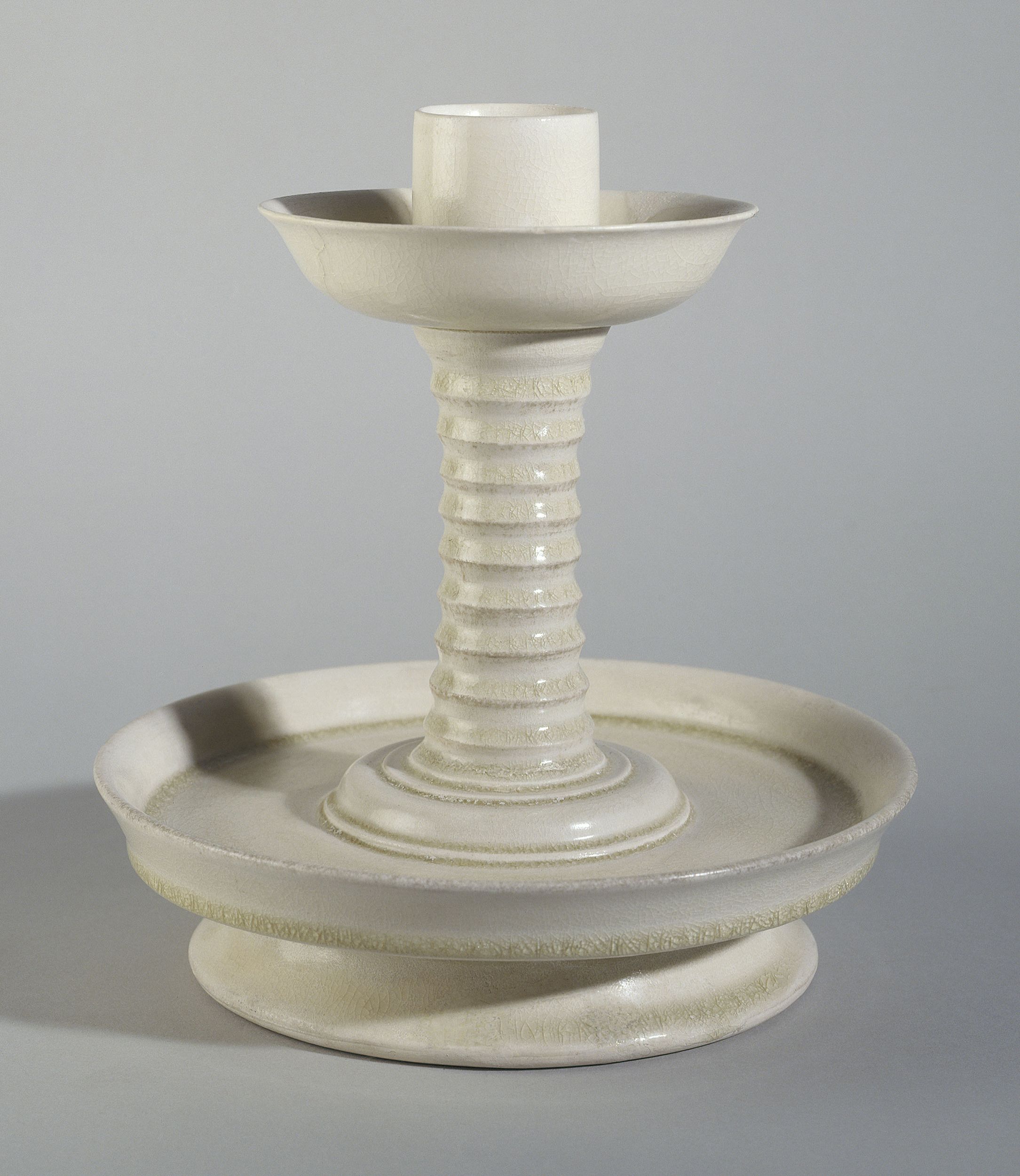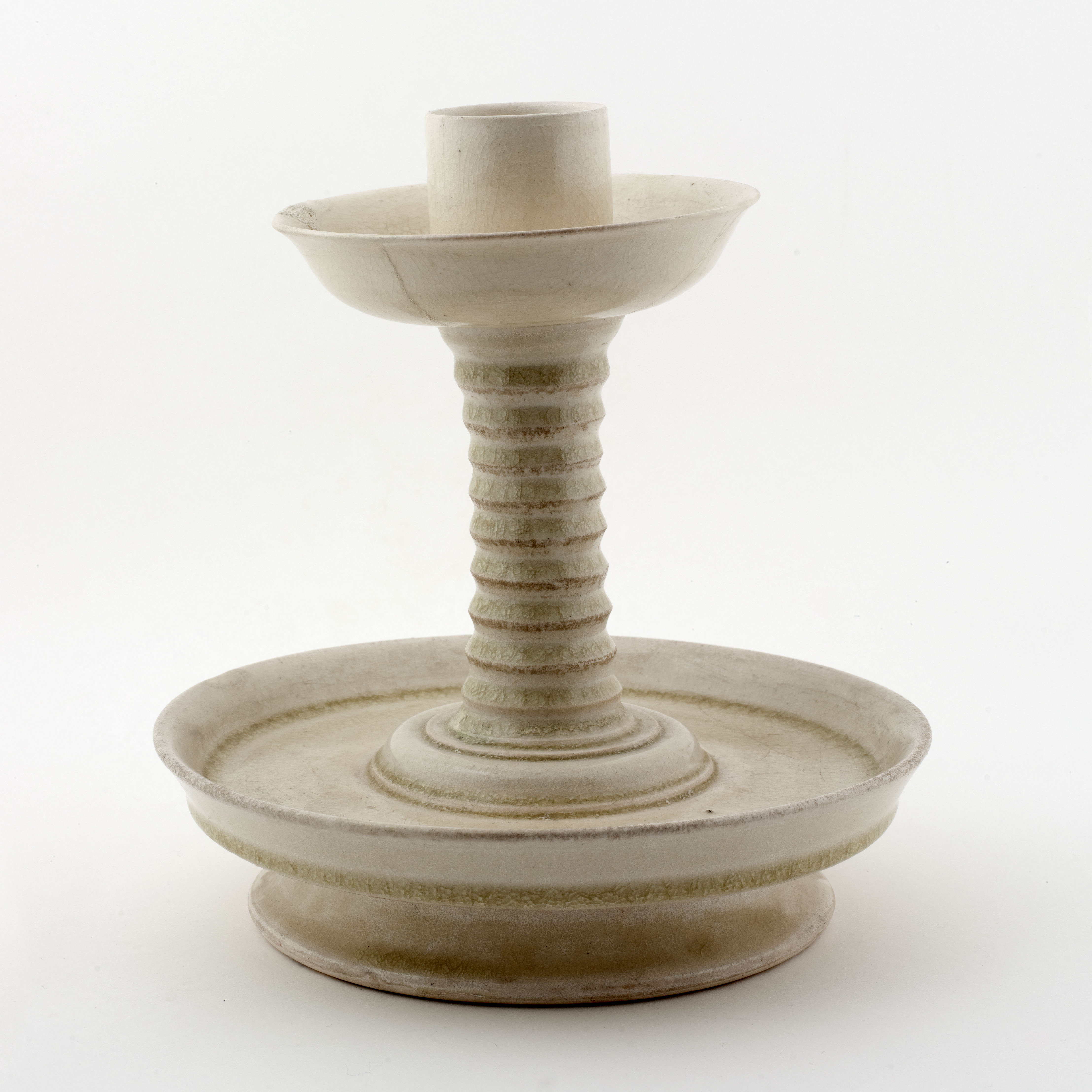
Chandelier
Porcelaine, Glaçure = Couverte
Chandelier
Don manuel : Beurdeley, Jean-Michel
M.C. 9948
This candleholder is made of a dense, finely textured white clay. Its slightly pinkish tint and opacity would classify it as stoneware rather than porcelain. It has a transparent glaze with a sea-green tinge in places where it has accumulated, and is covered with a dense network of crackles. The candleholder is set on a prominent foot typical of the Tang dynasty. The flat base has traces of the potter’s wheel and a slight central protuberance. The base, the inner wall and the lower edge of the foot are unglazed. The piece sagged slightly during firing.
Starting from the Han dynasty, candleholders were common among tomb furnishings. They are often associated with the dragon, as is the case with certain Tang pieces. This type of grooved candleholder appeared in the 6th century along with other more simple designs. The Asian Art Museum in San Francisco has a specimen similar to that of the Cernuschi Museum.
Anxiang xian wenwu guanlisuo, "Hunan Anxiang Xi Jin Liu Hong mu" (La tombe de Liu Hong - de la dynastie - des Jin de l'Ouest - dans le district d' - Anxiang au Hunan), Wenwu, 1993, n°11, pl.4, n°5.
Terre de neige, de glace et d'ombre: quatorze siècles d'histoire de la céramique chinoise à travers les collections du musée Guimet, Taipei, musée national d'Histoire de Taipei, 1999, p.103, cat.n°51.
Homage to Heaven, Homage to Earth: Chinese Treasures of the Royal Ontario Museum, Toronto/Buffalo/Londres, University of Toronto Press, 1992, p.58, ill.25.
Gilles Béguin, Art de l’Asie au Musée Cernuschi, Paris Musées / Findakly, 2000, p.106.
